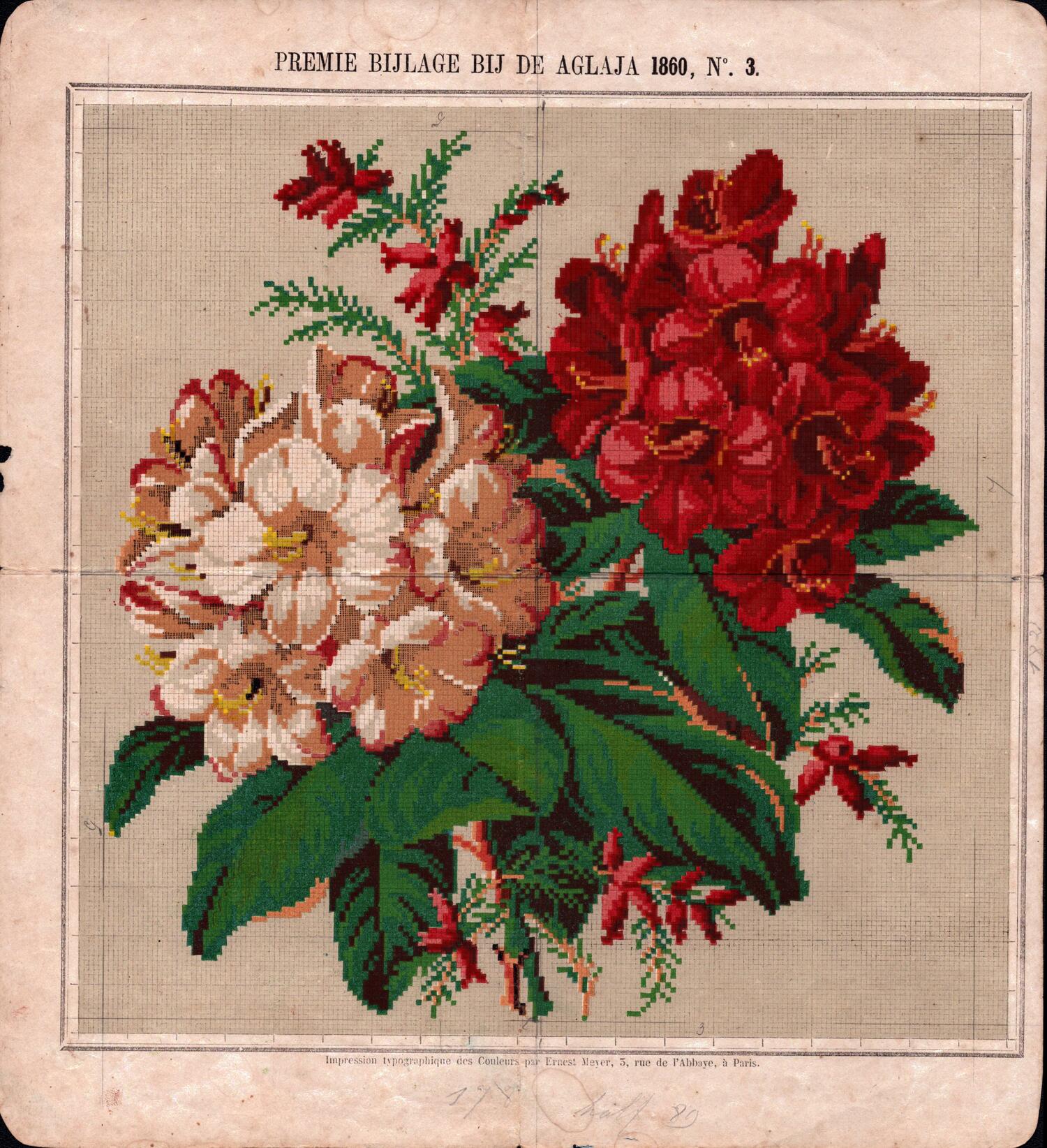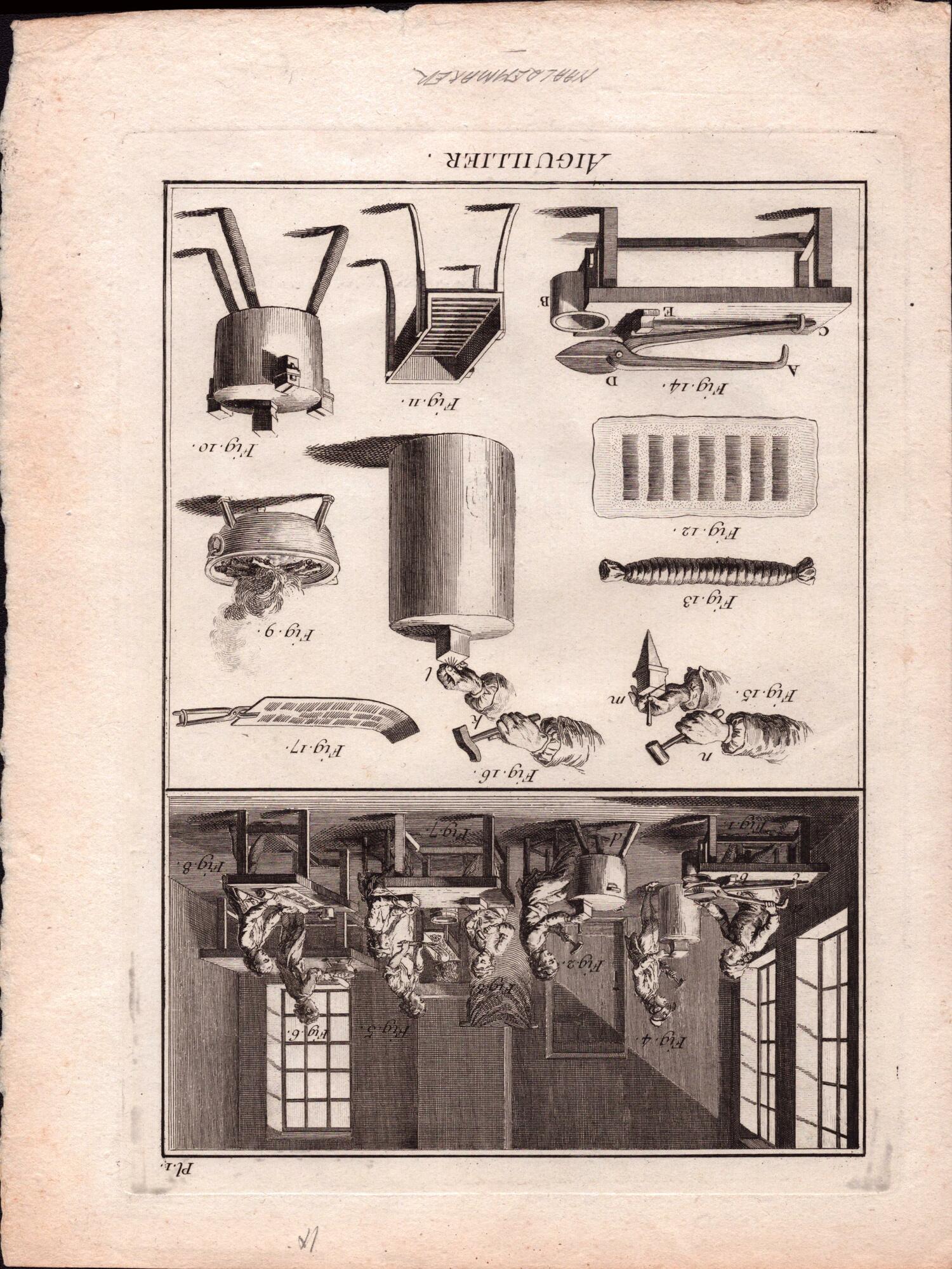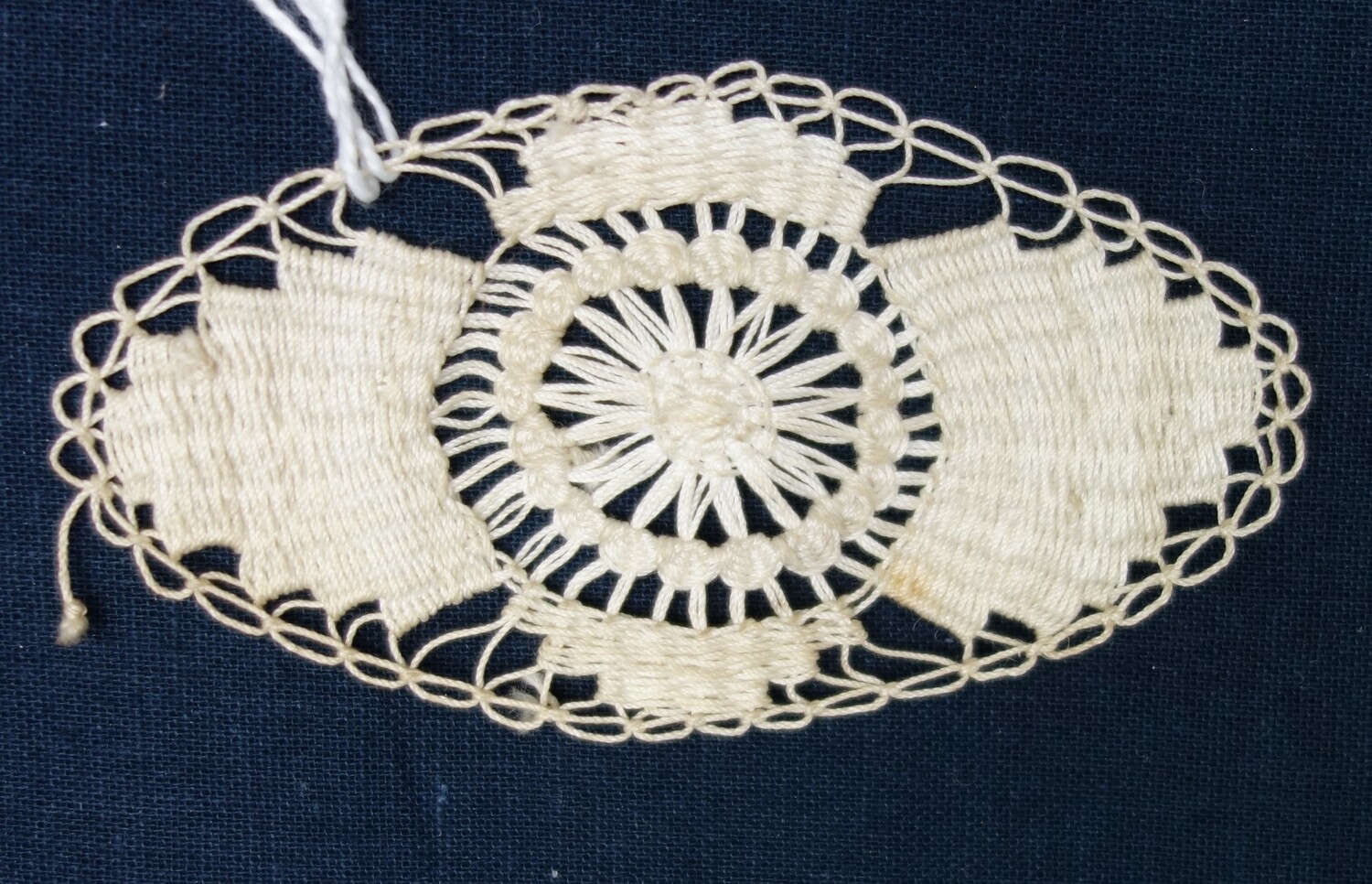In early 2023 the TRC was contacted by Hennie Stevan-Bathoorn and Sjoerd Stevan from the former Museum voor Naaldkunst, Winschoten in the northeastern part of the Netherlands. They had run a private museum for needlework and related lace techniques, in all of their many different forms. Due to their age, the museum was closed in 2016 and since then they have been trying to identify suitable new homes for different parts of the collection.
 Three book titles, published by the former Museum voor Naaldkunst, Winschoten
Three book titles, published by the former Museum voor Naaldkunst, Winschoten
Their question was - would the TRC be interested in a donation of textiles, patterns and tools, in total some 6500 objects. They referred to a number of these pieces that had been included in three books that they had published, namely Uit Kiep en Bazar: Vergeten naaigerei - Fournituren - Kunstnaaldwerk, 1850-1950 (2006; about equipment and related items); Pronklappen uit Nederlandse en Belgische meisjesscholen: Het verhaal van de Souvenirs de la jeunese, 1870-1935 (2009), and Zwarte Merklappen uit het Oldambt (1800-1880). Schoollappen uit Groningen en Friesland (2012).
 Berlin wool work chart, from the Dutch journal Aglaja, 1860, No. 3 (TRC 2023.2262).Since this initial contact we have been to Winschoten various times and have been discussing and thinking hard about this potential donation, with the owners, with our staff at the TRC and with other interested parties. Space (or rather lack of) at the TRC was the most important discussion point. After the various debates we decided yes, this donation was something for the TRC, as it would give extra depth to our own collection.
Berlin wool work chart, from the Dutch journal Aglaja, 1860, No. 3 (TRC 2023.2262).Since this initial contact we have been to Winschoten various times and have been discussing and thinking hard about this potential donation, with the owners, with our staff at the TRC and with other interested parties. Space (or rather lack of) at the TRC was the most important discussion point. After the various debates we decided yes, this donation was something for the TRC, as it would give extra depth to our own collection.
And the important point of space? Fortunately, nothing in the donation from Winschoten is large, in fact many of the items are very small and take the form of needles, scissors, thimbles, buttons, hooks and eyes, threads, lace bobbins, knitting sheaths and sticks. There are also sample sheets and coloured threads from specific companies, and machine lace samples from the early 20th century.
 Berlin wool work chart for slippers, Germany, mid-19th century (TRC 2023.2278).There was also a large selection of Dutch and Belgian school samples and samplers dating from the late 19th century to the 1960s. And there were samples of seams, hems, patching, mending, and of course different lace, knitting and embroidery techniques.
Berlin wool work chart for slippers, Germany, mid-19th century (TRC 2023.2278).There was also a large selection of Dutch and Belgian school samples and samplers dating from the late 19th century to the 1960s. And there were samples of seams, hems, patching, mending, and of course different lace, knitting and embroidery techniques.
There are, for example, over 25 roll samplers (pronkrol) that were made by girls in various schools in Belgium, the Netherlands and western Germany in the 19th century until the 1960s. These were used as ‘certificates’ to show a girl’s sewing and needlework skills when applying for a job.
Within the donation there are also a large number of embroidery patterns, including Berlin wool work charts, some of which date from the 1840’s, although most date from the 1850’s to the 1880’s. There are also several pairs of embroidered slipper vamps, which together with the charts will make an interesting mini-exhibition.
 French print with the production process of machine-made needles (TRC 2023.2348).In addition, there are numerous embroidery transfers, and printed charts from various magazines and booklets that date from the early 20th century onwards.
French print with the production process of machine-made needles (TRC 2023.2348).In addition, there are numerous embroidery transfers, and printed charts from various magazines and booklets that date from the early 20th century onwards.
We eventually picked up the donation from Winschoten on the 29th October 2023, and since then we have been slowly sorting through the many boxes, and making an initial division according to short term working (within 3 months), long term (9 months) or 'not suitable for the TRC.'
Based on this initial division, we think about 2000 items will be added to the TRC Collection. So far over 200 items have already been added to the TRC database, including prints, most of the Berlin wool work charts, Dutch knitting sheaths, Tenerife lace equipment, and tatting tools.
Many of the objects will be given new homes outside the TRC or sold in the TRC Shop - various items of Thai embroidery, for example, will be in the shop in a few weeks' time!
Gillian Vogelsang-Eastwood, 24 November 2023











